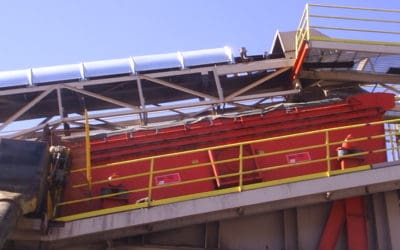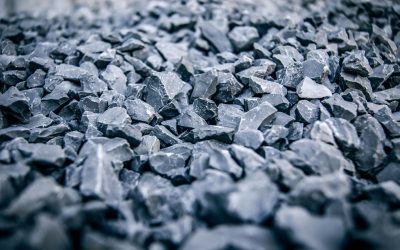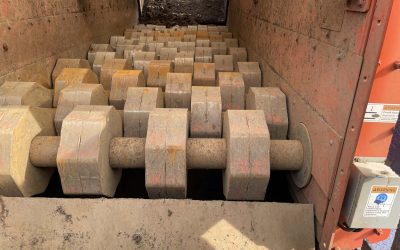Since the inception of single stream recycling, there has been a back-and-forth debate on which process is better: single or dual stream. This has been a persistent issue for MRFs, haulers, and municipalities alike. The debate has centered on which collection method provides the safest, most efficient, and most economic material recovery process.
Recycling can be resource intensive. As a result, MRFs must carefully weigh both the costs and benefits of collection methods and recycling processes. Some facilities prefer dual stream processing, while others have moved to adopt the single stream process.
With no proven winner, you may be left wondering which process is best for your facility. Unfortunately, there’s no simple answer. But to help you more carefully weigh the costs and benefits of both options, we’ll take a closer look at both single and dual stream recycling.
The Differences Between Single and Dual Stream Recycling
Both single stream and dual stream recycling have a similar end goal: the efficient collection and processing of recyclables. Yet each recycling method differs in its fundamental operation. Let’s briefly overview each of them.
What Is Single Stream Recycling?
Single stream recycling is a relatively new process. MRFs began to deploy single stream recycling in the early 90s, with the first major single stream operation starting in 1993. Today, around 63% of recycling communities are served through a single stream process.
Single Stream recycling, which is also commonly known as commingled recycling, refers to a system in which recyclables are mixed: papers, plastics, metals, and other recyclable materials can be deposited together in a single container. The material is picked up by a hauler and transported to an MRF where it’s more thoroughly screened and sorted.
Learn about our MSW screening solutions.
What Is Dual Stream?
By comparison, dual stream recycling requires recyclables to be sorted prior to being picked up by haulers. In most dual stream programs, mixed paper products must be kept separate from glass, metal, and plastics.
Municipalities which practice dual stream recycling provide consumers with two separate bins or containers for their curbside pickup. As a result, haulers must also keep the products separate. This requires specialized trucks with separate compartments for both types of recyclables.
The Benefits of Single vs. Dual Stream
When weighing the merits of both dual and single stream recycling, it quickly becomes obvious that both offer considerable benefits. It’s imperative to measure the benefits of each process and consider which is ideal for your operation. So, we’ll provide a closer breakdown of each method’s benefits.
Single Stream Benefits
Single Stream recycling offers MRFs a number of benefits:
- Consumer convenience: Single stream doesn’t require consumers to separate their recyclables into two containers, making it a simpler, easier process for subside pickup.
- Increased recycling participation: Alongside increased convenience comes increased levels of curbside consumer recycling.
- Reduced hauling costs: Single stream recycling reduces stop times for pickups and requires less labor than dual stream pickup.
Dual Stream Benefits:
Like its counterpart, dual stream recycling also has its share of benefits, including:
- Less contamination: Because it requires more attentive separation from consumers, dual stream recycling generally has less contamination, meaning pure materials and higher prices.
- Larger number of products accepted: In some cases, dual stream recycling may allow for a wider variety of paper types to be accepted.
- Lower costs to process the collected recyclables: As recyclables have been, to a certain degree, pre-sorted, screening is generally less intensive.
In general, it’s clear the benefits of single stream recycling more closely reduce upfront costs to the MRF. Meanwhile, dual stream recycling can help to mitigate costs during the later stages of the recovery process. Of course, even this is an oversimplification, and many factors must be considered, such as:
- The current operational capacities of your facility
- Costs required to overhaul your facilities equipment and systems to align with the chosen process
- Training of staff on new or updated processes
As with any change, fully consider the operation-wide ramifications of the recycling stream process you choose to implement at your facility.
The Challenges of Single and Dual Stream Recycling
While both single and dual stream recycling offer a range of benefits to MRFs, they also have their downsides which should be carefully considered. Here’s a more detailed examination of the challenges of single and dual stream recycling.
Single Stream Challenges
While offering a simplified process for consumers and haulers, single stream recycling creates challenges for MRFs, including:
- Decreased quality of recovered materials: Because single stream allows consumers to deposit their recyclables into a single container, there is a much higher amount of contamination, such as broken glass, food waste, and other non-recyclables commingled into the mix.
- Higher production costs for MRFs: As a result of less sorting by consumers, the brunt of the material screening must be conducted by the MRF. In turn, this can lead to higher costs.
- More labor-intensive sorting: Part of the higher costs to MRFs stems from more intensive labor. Increased manual labor, conducted by line workers, is often required to more thoroughly sort the commingled materials. Further, screening equipment must be adapted to handle the increased demands of single stream recycling.
Related Articles:
Three Ways MRFs can Reduce Recycling Contamination
Dual Stream Challenges
Similarly, dual stream recycling has its own share of challenges. Some of the costs of dual stream recycling include:
- Higher collection costs: Because consumers have to pre-sort their recyclables, haulers must pick-up twice the number of bins. In addition, the materials must remain separated in the hauling vehicle, requiring more sophisticated trucks and generally more time at each stop.
- Limitations on recyclable materials: To keep materials separated, haulers need trucks with separate compartments. In turn, this limits the amount of space for materials, which makes it difficult to expand collection for other resources, like scrap.
- Increased burden on consumers: As dual stream recycling requires consumers to pre-sort their recyclables, there is less participation. This translates into less material making it to MRFs and more material ending up in landfills.
The needs of your operation will vary, and the potential costs of each process will likely differ as a result. Comparing the costs of single and dual stream methods with your facility’s own capabilities and needs is critical to maximizing its efficiency.
AEI’s Recycling Solutions
We understand that both dual and single stream recycling pose material screening challenges for MRFs. To meet the demands of today’s material recovery challenges, AEI offers the BIVITEC® screen.
The BIVITEC® was designed to meet the needs of challenging material processing applications. Based on a flip flow screening principle, its design features dual-vibratory forces applied to an elastic mesh screen. This makes it an ideal solution for sorting fines from high-moisture materials, including consumer waste.
Contact our sales team to learn more about BIVITEC® and to request a quote for your operation.


